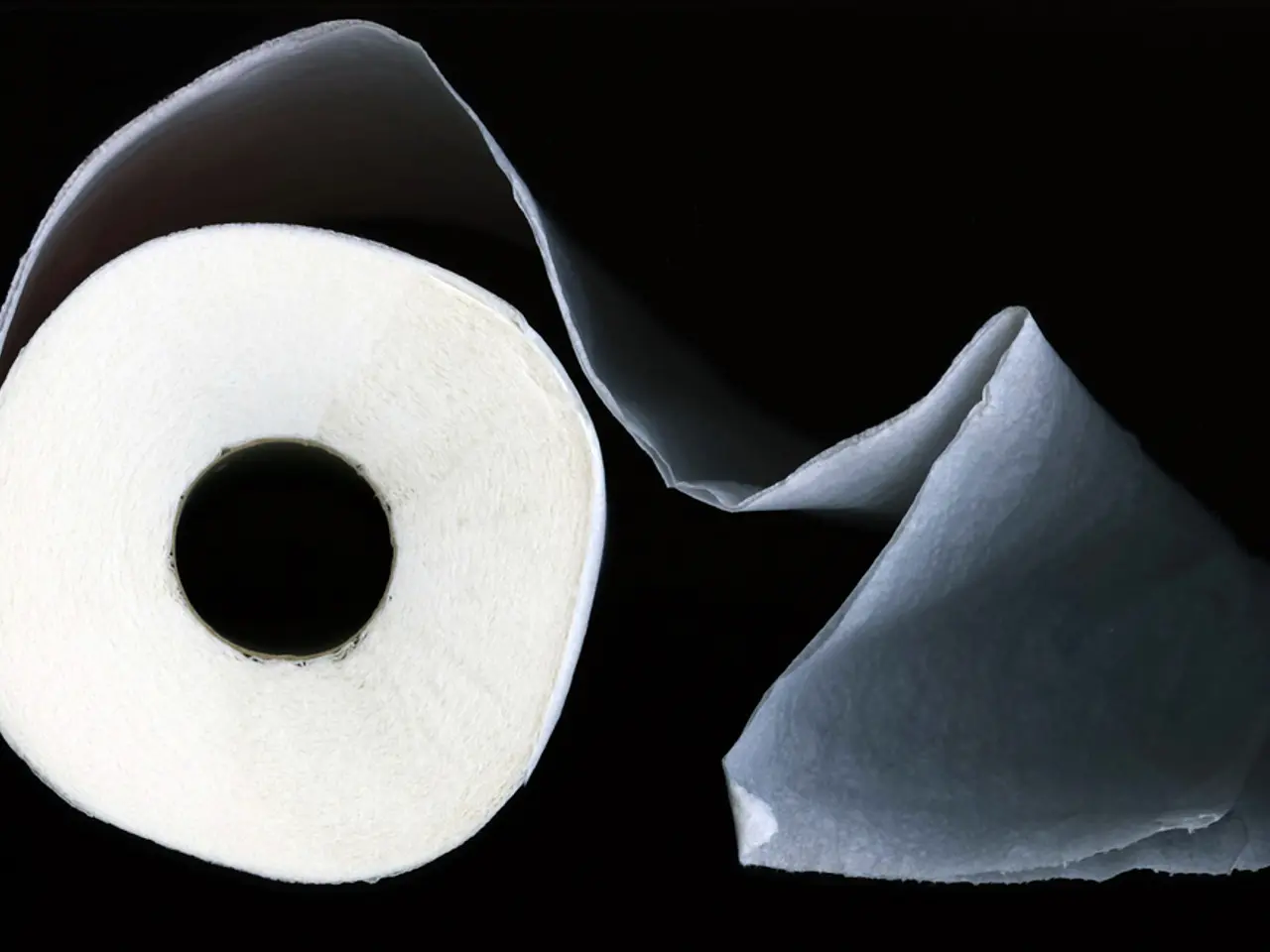Unhealthy rectal growths: Recognizing signs, examinations, and therapies
Distinguishing Anal Warts from Hemorrhoids: A Guide
Anal warts and hemorrhoids are two common conditions that can cause discomfort in the anal area. While they share some similarities, it's essential to understand the differences between the two for accurate diagnosis and effective treatment.
Anal Warts are caused by the human papillomavirus (HPV), a sexually transmitted infection. They typically appear as small, flesh-colored or grey growths around or inside the anus, resembling small bumps or cauliflower-like structures. Unlike hemorrhoids, anal warts often cause itching but are usually painless.
On the other hand, Hemorrhoids are swollen veins in the anal region, often caused by pressure or strain during bowel movements or childbirth. External hemorrhoids can appear as lumps near the anus, which may be tender or painful, especially if thrombosed (clotted). Internal hemorrhoids usually cause painless bright red bleeding during bowel movements and can prolapse (protrude) depending on their severity.
| Feature | Anal Warts | Hemorrhoids | |--------------------------|------------------------------------------|-------------------------------------------| | Cause | HPV infection | Swollen anal veins due to pressure/strain | | Appearance | Small, flesh-colored cauliflower-like growths | Bulging lumps; external are skin-colored to purplish; internal not visible unless prolapsed | | Symptoms | Itching, possible mild discomfort, rarely bleeding | Itching, pain (especially if thrombosed), bright red bleeding | | Pain | Usually painless | Painful if thrombosed or prolapsed | | Bleeding | Rare | Common (bright red blood on toilet paper or stool) |
If you're uncertain about the nature of your symptoms, it's important to consult a healthcare professional, such as a proctologist or dermatologist, for a thorough examination.
Treatment options for anal warts include topical medications, cryotherapy, electrosurgery or cauterization, surgical excision, and laser therapy. The choice of treatment depends on factors such as wart size, location, number, and patient preference. Recurrence is common, so follow-up is necessary.
- Topical medications like podophyllotoxin, imiquimod cream, or sinecatechins ointment can be applied to remove warts.
- Cryotherapy freezes warts off using liquid nitrogen.
- Electrosurgery or cauterization burns off warts.
- Surgical excision removes warts by surgery if they are extensive.
- Laser therapy uses lasers to destroy wart tissue.
Hemorrhoid treatments vary by severity and may include lifestyle changes, sitz baths, topical creams, minimally invasive procedures, or surgery. For mild cases, dietary fiber and hydration can help prevent hemorrhoids, while sitz baths and topical creams can provide symptom relief.
If symptoms persist, minimally invasive procedures like sclerotherapy or rubber band ligation may be recommended. For severe cases, surgery may be necessary.
Remember, if you experience anal lesions or symptoms suggestive of either condition, it's crucial to seek the advice of a healthcare professional for accurate diagnosis and tailored treatment. Anal warts are contagious and related to HPV infection, whereas hemorrhoids are vascular and influenced by other factors like straining or constipation.
[1] Mayo Clinic. (2021). Hemorrhoids. [online] Available at: https://www.mayoclinic.org/diseases-conditions/hemorrhoids/symptoms-causes/syc-20360823
[2] NHS. (2021). Anal warts. [online] Available at: https://www.nhs.uk/conditions/anal-warts/
[3] American Cancer Society. (2021). Anal cancer. [online] Available at: https://www.cancer.org/cancer/anal-cancer.html
[4] Cleveland Clinic. (2021). Hemorrhoid treatment. [online] Available at: https://my.clevelandclinic.org/health/treatments/16164-hemorrhoid-treatment
[5] American Family Physician. (2019). Clinical Practice Guidelines for the Management of Hemorrhoids. [online] Available at: https://www.aafp.org/pubs/afp/issues/2019/0915/p465.html
- Science has provided therapies and treatments for both anal warts and hemorrhoids, ensuring effective management of these conditions.
- Skin care is crucial in maintaining good health, as anal warts are contagious and related to HPV infection.
- Medial conditions, such as respiratory conditions, digestive health, eye health, hearing, and neurological disorders, should not be overlooked while addressing familial health concerns.
- Fitness and exercise, coupled with proper nutrition, play a significant role in overall health and wellness, including men's health and weight management.
- Skin-care practices and treatments for conditions like warts, skin-conditions, and aging can be evaluated when consulting health professionals for family health matters.
- Mental health should be given equal importance as physical health when considering family health, parenting, and wellness.
- Cardiovascular health is essential in the prevention and management of various medical conditions, including cancer and autoimmune disorders.
- Medicare offers coverage for many diagnostic tests, treatments, and medications related to family health, including medical conditions like cancer and diabetes.
- Therapies and treatments, such as CBD, have been shown to alleviate symptoms of neurological disorders, skin-conditions, and mental health issues.
- Workplace-wellness initiatives, including nutrition education and fitness programs, can improve employee health and productivity, reducing absenteeism and increasing overall engagement.
- Women's health encompasses reproductive health, sexual health, and gynecological care, all of which should be addressed proactively for a healthy family.
- Eye care and regular check-ups are essential in maintaining good vision and addressing eye-health concerns that can impact overall well-being.
- Hearing tests and treatments are crucial for early detection and management of hearing loss and related conditions, ensuring effective communication for familial health and wellness.
- Early identification and management of conditions like hemorrhoids, anal warts, and other health concerns are crucial in maintaining good health and preventing complications, allowing individuals to enjoy their golden years with ease and comfort.




